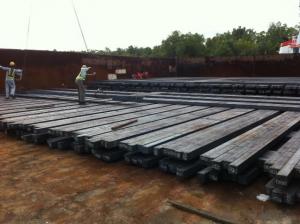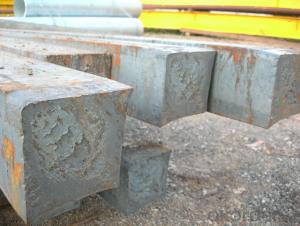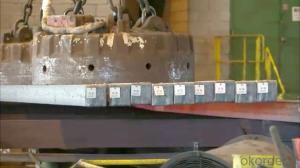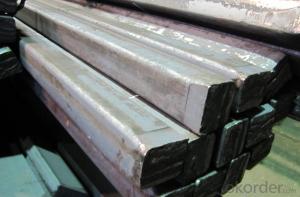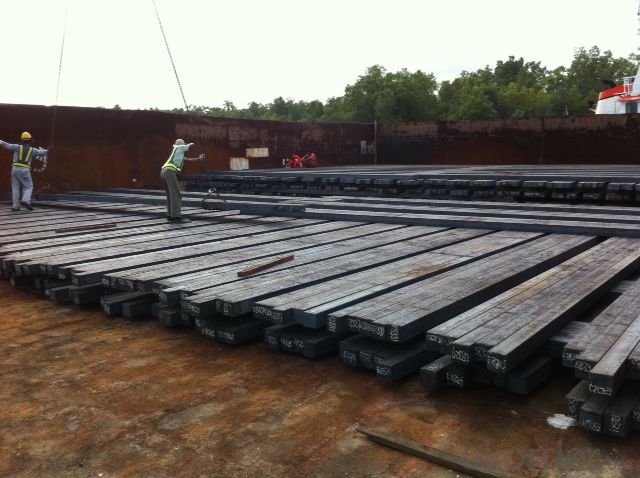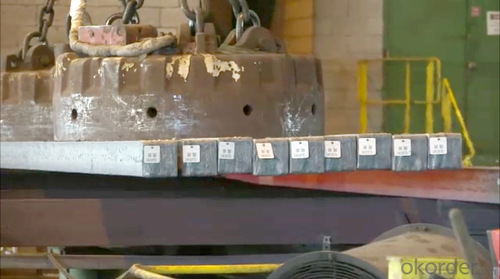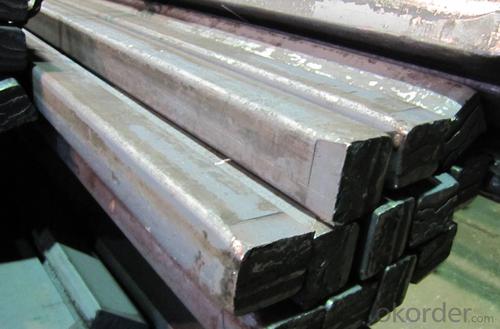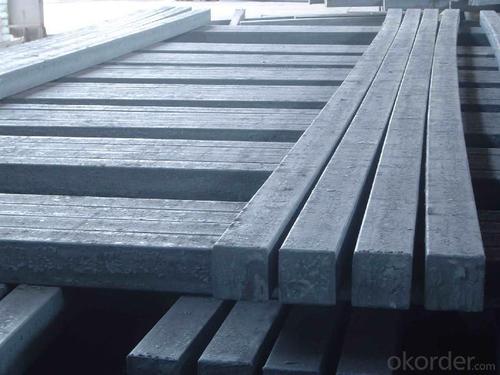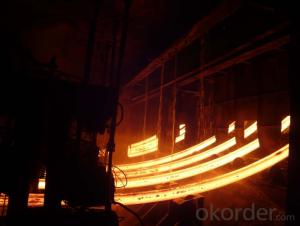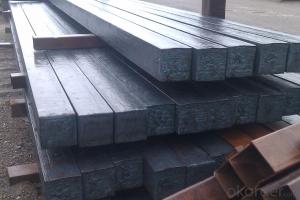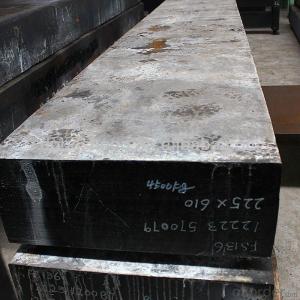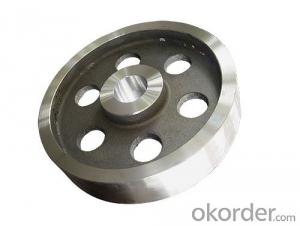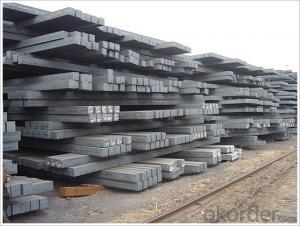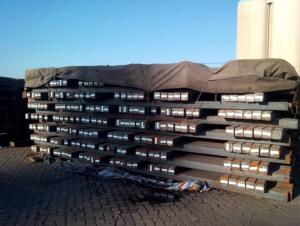Prime square alloy steel billet 165mm Q235
- Loading Port:
- Shanghai
- Payment Terms:
- TT OR LC
- Min Order Qty:
- 100 m.t.
- Supply Capability:
- 10000 m.t./month
OKorder Service Pledge
OKorder Financial Service
You Might Also Like
Structure of Prime square alloy steel billet 165mm Q235
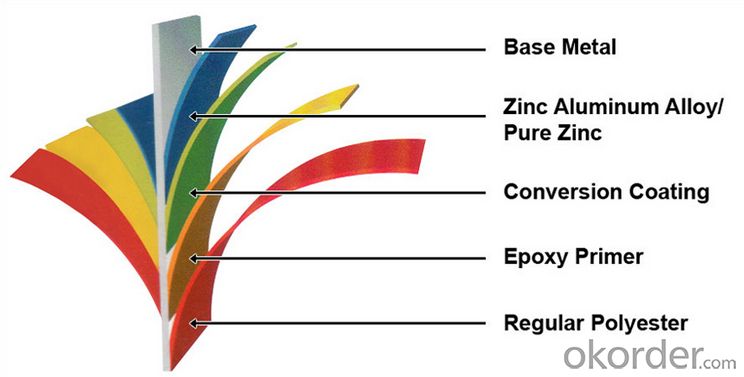
Description of Prime square alloy steel billet 165mm Q235
1) Excellent corrosion resistance: The zinc layer provides a good protection of Pre-painted Galvanizeed Steel Sheet.
2) High heat resistance: The reflective surface of the material aids in efficiently reflecting the sunlight away and in turn reducing the amount of heat transmitted. The thermal reflectivity converts into energy savings.
3) Aesthetics: Pre-Painted Galvanized steel sheet is available in plethora of patterns and multiple sizes as per the requirements that given by our customers.
4) Versatility: can be used in the various areas.
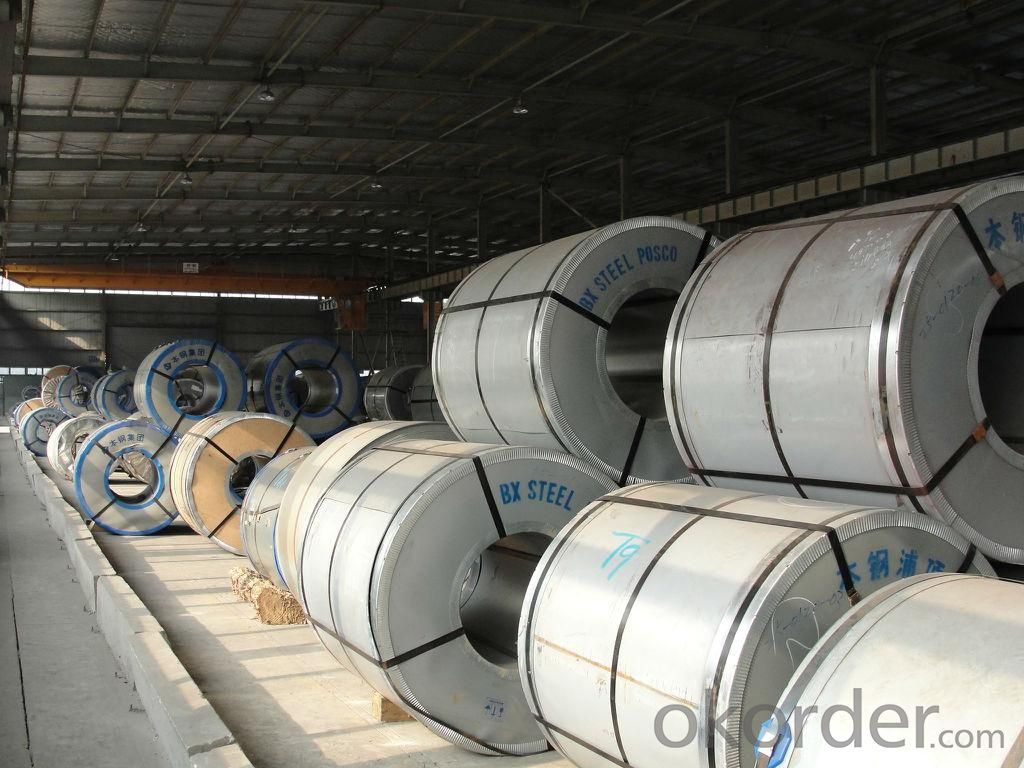
Main Feature of Prime square alloy steel billet 165mm Q235
Uncoated CR steel sheet
With the features of in line with the international highest standards in demension and shape, excellent surface finish and properties, the products are mainly used in home appliance and automobile industries.
Galvanized steel sheet(include HDG and EG)
With the features of good corrosion resistance, the products are mainly used in automobile, home appliance, electronics, building and machinery manufacture industries, etc.
Precoated steel sheet
With the features of enviromental protection and good processablility, long lasting surface durability, rich in colors, the products are maily used in building, home appliance and furniture industries, etc.
Applications of Prime square alloy steel billet 165mm Q235
1) Excellent corrosion resistance: The zinc layer provides a good protection of Pre-painted Galvanizeed Steel Sheet.
2) High heat resistance: The reflective surface of the material aids in efficiently reflecting the sunlight away and in turn reducing the amount of heat transmitted. The thermal reflectivity converts into energy savings.
3) Aesthetics: Pre-Painted Galvanized steel sheet is available in plethora of patterns and multiple sizes as per the requirements that given by our customers.
4) Versatility: can be used in the various areas.
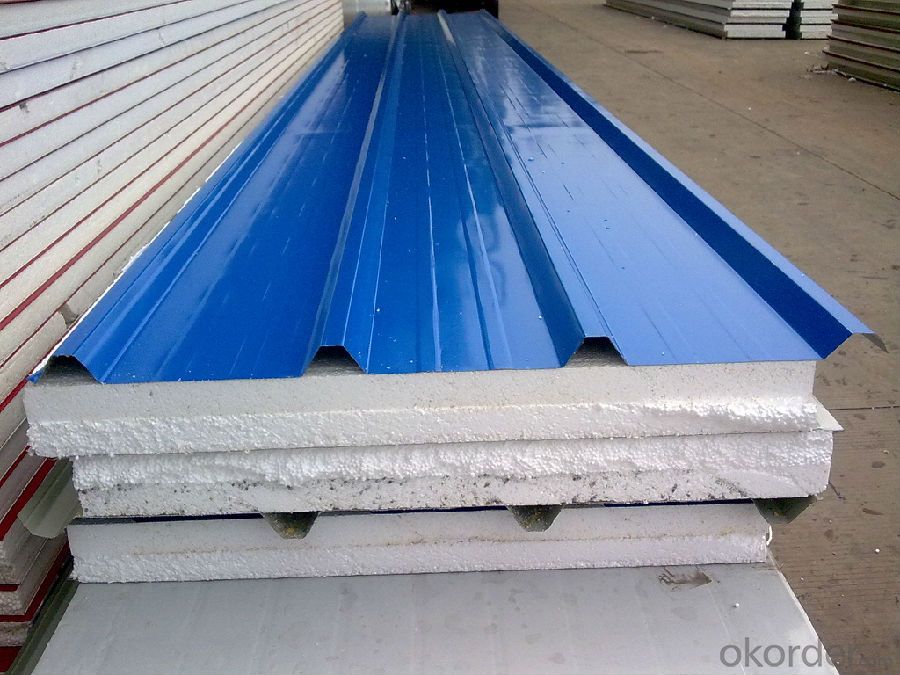
Specifications of Prime square alloy steel billet 165mm Q235
Product | Billet |
Material Grade | SGCC / SGCH / DX51D+AZ, etc |
Thickness | 0.6-3.0mm |
Width | 500-1500mm |
Tolerance | Thickness: +/-0.02mm , Width:+/-2mm |
Zinc-coating | Z30-150g/m2 |
Technique | Raw material: Hot rolled steel coil --> Cold rolled_>hot dipped galvalume |
Surface | Dried, Chromated, Unoiled |
Spangle | Regular spangle , small spangle, zero spangle |
ID | 508MM 610MM |
Coil weight | 1-25MT |
Export package | Cardboard inner sleeves, Waterproof paper, galvanized steel covered and steel strip packed |
FAQ of Prime square alloy steel billet 165mm Q235
We have organized several common questions for our clients,may help you sincerely:
1. How Can I Visit There?
Our company is located in Tianjin City, China, near Beijing. You can fly to Tianjin Airport Directly. All our clients, from home or aboard, are warmly welcome to visit us!
2. How Can I Get Some Sample?
We are honored to offer you sample.
3. Why choose CNBM?
we always fix steel produce in container well to make it safe arrive at destination port
we always provide best and professional forward service for our buyer
we always apply 14days free detention for our buyers container in destination
we provide one set After-sales service for our buyer
we provide China inland steel market price report
we help our buyer become number one in local market .
- Q: Are steel billets used in the manufacturing of construction machinery?
- Yes, steel billets are commonly used in the manufacturing of construction machinery. Steel billets are semi-finished products that are used as raw materials in various industries, including construction machinery manufacturing. These billets are typically made from molten steel that is cast into a solid form and then further processed to shape and size. Due to their high strength, durability, and versatility, steel billets are ideal for constructing heavy-duty components and structures in construction machinery. They can be used to manufacture various parts such as chassis, frames, buckets, booms, and arms, among others. The use of steel billets ensures that construction machinery is capable of withstanding the demanding conditions and heavy loads commonly encountered in construction projects.
- Q: What are the major steel billet producing countries?
- The major steel billet producing countries include China, India, Russia, Japan, and the United States.
- Q: How are steel billets manipulated during the manufacturing process?
- Steel billets are manipulated during the manufacturing process through various methods such as heating, rolling, forging, and cutting. Heating the billets makes them more malleable and easier to shape. Rolling involves passing the heated billets through a series of rollers to reduce their thickness and create desired shapes. Forging is another technique where the billets are shaped using compressive forces. Finally, cutting is done to obtain specific lengths or shapes required for further processing or fabrication.
- Q: How are steel billets used in the production of heat exchangers?
- Steel billets are used in the production of heat exchangers as they serve as the raw material for manufacturing the structural components, such as tubes, plates, and fins, that make up the heat exchanger. These billets are melted, cast, and then fabricated into the desired shape and size to create the necessary structural integrity and heat transfer efficiency required for heat exchangers.
- Q: How are steel billets used in the manufacturing of packaging equipment?
- Packaging equipment relies heavily on steel billets as a vital element in its manufacturing process. These billets serve as the primary material for producing diverse parts and components crucial to the functioning of packaging machinery. To begin with, steel billets are typically employed in the fabrication of packaging equipment frames and structures. The robust nature and enduring quality of steel make it an ideal selection for constructing a sturdy framework that provides support to the entire machine. This guarantees that the packaging equipment can endure the demands of continuous operation and heavy loads. Furthermore, steel billets are also instrumental in the production of significant components such as gears, shafts, and rollers. These components play a pivotal role in ensuring the smooth operation and rotation required for efficient product packaging. Steel's exceptional mechanical properties, including high tensile strength and resistance to wear and tear, render it suitable for these critical parts. Additionally, steel billets are frequently utilized in the manufacturing of cutting and forming tools employed in packaging equipment. These tools are responsible for shaping and cutting various materials like cardboard or plastic to create packaging containers or wrap products. The hardness of steel and its ability to maintain sharp edges make it an ideal material for crafting these tools, thus ensuring precise and efficient packaging operations. In conclusion, the significance of steel billets in the manufacturing of packaging equipment cannot be overstated, as they are instrumental in creating the frames, components, and tools necessary for the efficient and reliable operation of packaging machinery. The strength, durability, and versatility of steel billets make them the preferred choice in the packaging industry.
- Q: What are the different surface finishes available for tool steel billets?
- There are several surface finishes available for tool steel billets, including mill finish, hot rolled, cold rolled, ground, and polished. Each finish has its own characteristics and is used for specific purposes. Mill finish is the raw surface of the billet after it has been manufactured, while hot rolled has a rougher texture due to the high temperature rolling process. Cold rolled billets have a smoother surface and tighter dimensional tolerances. Ground finish involves grinding the surface to achieve a specific level of smoothness and precision. Finally, polished finish provides the highest level of smoothness and reflectivity, often used for aesthetic purposes or in applications requiring minimal friction.
- Q: What are the common challenges in steel billet production?
- Some common challenges in steel billet production include ensuring consistent quality and composition, maintaining precise dimensions and tolerances, managing temperature control during the casting process, preventing defects and surface imperfections, and optimizing production efficiency and yield. Additionally, factors such as raw material quality, equipment maintenance, and skilled workforce are also critical in overcoming these challenges.
- Q: What are the main factors affecting the dimensional stability of steel billets?
- There are several main factors that can affect the dimensional stability of steel billets. 1. Temperature: One of the most significant factors is temperature. Steel billets can undergo thermal expansion or contraction depending on the temperature they are exposed to. Changes in temperature can cause the billets to expand or contract, leading to dimensional changes. It is crucial to control the temperature during the manufacturing process and subsequent cooling stages to minimize these effects. 2. Cooling rate: The rate at which the steel billets cool down after being heated also affects their dimensional stability. Rapid cooling can result in internal stresses within the billet, causing it to warp or distort. On the other hand, slow cooling can lead to uneven cooling and uneven dimensional changes. 3. Composition: The chemical composition of the steel billets plays a significant role in their dimensional stability. Different alloying elements, impurities, and carbon content can influence the material's behavior during heating and cooling. For instance, higher carbon content can increase the likelihood of warping or distortion. 4. Mechanical stresses: Mechanical stresses from handling, transportation, or machining processes can impact the dimensional stability of steel billets. Excessive bending, twisting, or pressure can cause permanent deformation or residual stresses within the billet, affecting its overall dimensional stability. 5. Heat treatment: The heat treatment process can also influence the dimensional stability of steel billets. Different heat treatment methods, such as annealing, quenching, or tempering, can introduce internal stresses or phase transformations that may alter the billet's dimensions. 6. Manufacturing techniques: The processes used during the production of steel billets, such as casting, rolling, or forging, can have an impact on their dimensional stability. Inadequate control or inconsistencies in these manufacturing techniques can lead to variations in the billet's dimensions. It is crucial to consider and control these factors to ensure the dimensional stability of steel billets, as any dimensional changes can affect the subsequent processing steps and the final product's quality.
- Q: How do steel billets contribute to the manufacturing of construction products?
- Steel billets are an essential raw material in the manufacturing of construction products because they serve as the starting point for various steel products. These billets are transformed into different shapes and sizes through processes like rolling, forging, or extrusion, allowing them to be used in the construction of structures such as beams, columns, bars, and rods. The high strength and durability of steel billets make them ideal for withstanding heavy loads and adverse weather conditions, ensuring the safety and longevity of construction projects.
- Q: What is the role of steel billets in the construction of high-rise buildings?
- Steel billets play a vital role in the construction of tall buildings, serving as the raw material for structural components like beams, columns, and girders. Their exceptional strength and durability make them ideal for supporting heavy loads and resisting external forces such as wind and earthquakes. Furthermore, steel billets offer design and construction flexibility, allowing architects and engineers to create intricate and visually appealing structures. Their versatility also enables the construction of large spans, reducing the need for excessive supporting columns and maximizing usable space. In addition, steel billets are highly resistant to corrosion and fire, ensuring the longevity and safety of skyscrapers. The galvanized or coated surface protects against rust, while the fire-resistant properties of steel maintain its strength at high temperatures. Moreover, steel billets contribute to the sustainability and environmental efficiency of high-rise construction. The use of recycled steel billets reduces the demand for virgin resources and minimizes waste, aligning with sustainable development principles. In conclusion, steel billets are crucial for constructing tall buildings due to their strength, durability, flexibility, resistance to corrosion and fire, and contribution to sustainable development. They enable the creation of robust, safe, and aesthetically pleasing structures that can withstand various forces and optimize space utilization.
Send your message to us
Prime square alloy steel billet 165mm Q235
- Loading Port:
- Shanghai
- Payment Terms:
- TT OR LC
- Min Order Qty:
- 100 m.t.
- Supply Capability:
- 10000 m.t./month
OKorder Service Pledge
OKorder Financial Service
Similar products
Hot products
Hot Searches
Related keywords
